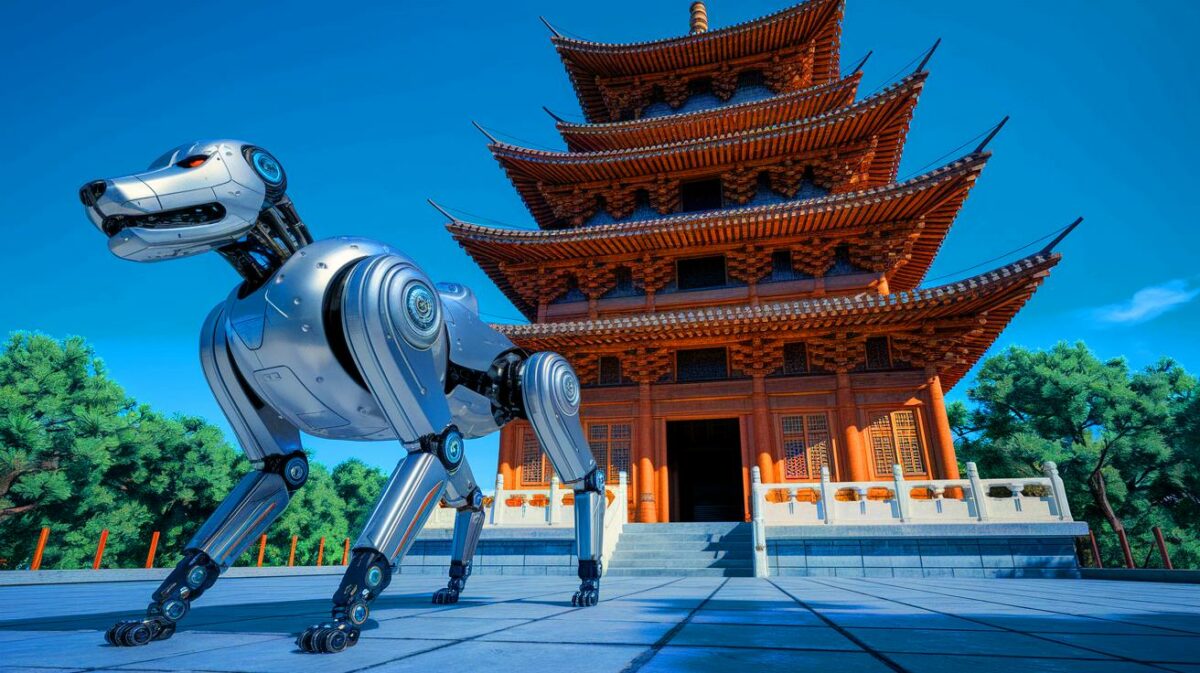| IN A NUTSHELL |
|
In an impressive fusion of cutting-edge technology and cultural heritage preservation, Lenovo has introduced a six-legged robotic dog to aid in the safeguarding of China’s oldest and tallest wooden structure, the Yingxian Wooden Pagoda. This project, a collaboration between Lenovo and the Tsinghua University–Palace Museum Cultural Heritage Joint Research Center, signifies a milestone in digital heritage conservation. The deployment of the Daystar Bot GS in Shanxi Province is a testament to the remarkable potential of AI applications in preserving historical monuments. This initiative, known as the AI Smart Pagoda 2.0 project, could redefine how we approach the conservation of ancient structures.
Revolutionizing Heritage Conservation
The Daystar Bot GS is a marvel of modern engineering, specifically designed to enhance the conservation of historic sites. With its advanced control systems and cutting-edge perception algorithms, the robot is equipped to handle the intricate task of preserving the Yingxian Wooden Pagoda’s structural integrity. The pagoda, at 220.9 feet tall, is not only the oldest surviving multi-story wooden structure but also the tallest of its kind in the world. This UNESCO World Heritage Site requires delicate handling, a task perfectly suited to the capabilities of Lenovo’s innovative robot.
By carrying out intelligent 3D scanning and digital modeling, the robot assists in developing comprehensive structural assessments and historical analyses. These capabilities allow for more accurate and efficient conservation efforts, ensuring that this thousand-year-old monument continues to stand as a testament to historical craftsmanship. The robot’s ability to navigate complex terrain with precision is crucial in maintaining the pagoda’s structural health, preventing potential damage from environmental factors.
The Power of Real-Time Data
One of the key aspects of this initiative is the integration of real-time surveillance capabilities using the robot’s advanced technologies. By employing deep learning algorithms and multi-modal sensing, the project enables continuous monitoring of the pagoda’s condition. Through environmental modeling, historical data can be compared with real-time data to identify changes in surface structure, paint layers, and wood stability. This process allows for immediate interventions if any signs of deterioration are detected.
Lenovo’s commitment to pushing the boundaries of embodied intelligence is evident in their approach to this project. The Smart Yingxian Wooden Pagoda project, first launched in 2023, has undergone significant technological enhancements in its 2.0 phase. This upgrade showcases the potential for AI to play an instrumental role in cultural heritage protection, ensuring that historical sites are preserved with the highest degree of care and precision.
Innovative Applications in AI
The deployment of the Daystar Bot GS highlights the innovative applications of AI in the field of heritage conservation. The robot’s design is tailored for industrial and public service applications, making it ideal for tasks that require high levels of precision and adaptability. Its autonomous navigation and decision-making skills are crucial for handling the delicate nature of cultural heritage sites like the Yingxian Wooden Pagoda.
This initiative is part of a broader effort to explore how AI can enhance the conservation of architectural heritage. By combining traditional knowledge with intelligent systems, Lenovo and its partners aim to create a sustainable model for preserving history for future generations. The project represents a significant step forward in the application of AI to real-world scenarios, where its ability to perform complex tasks with minimal human intervention offers new possibilities for conservation efforts.
Future Prospects for AI in Heritage Conservation
As the AI Smart Pagoda 2.0 project progresses, the potential for AI-based conservation strategies continues to grow. The collaboration between Lenovo and the Tsinghua University–Palace Museum Cultural Heritage Joint Research Center demonstrates the power of interdisciplinary partnerships in advancing digital heritage preservation. By leveraging the strengths of AI, the project paves the way for more sophisticated and effective conservation methods, ensuring that invaluable cultural relics are protected for future generations.
The integration of AI in heritage conservation raises intriguing possibilities for the future. How might these technologies evolve to address the diverse challenges faced by historical sites worldwide? As we continue to explore the potential of AI in preserving our cultural legacy, what new innovations will emerge to further enhance our ability to protect and celebrate our shared history?
Did you like it? 4.5/5 (22)









Wow, a robotic dog protecting a temple? That’s something straight out of a sci-fi movie! 🐕🦺
How does the robot handle bad weather? Seems like it would be a challenge for its sensors.
Is this just a publicity stunt or does the robot actually make a difference? 😒
Great initiative! Combining tech with heritage conservation is a win-win. Thanks for sharing!
Do you think the robot could replace human efforts in other historical sites too?
What happens if the robot malfunctions? Who’s responsible then?
This is amazing! Imagine what else we could preserve with AI like this! 🔍
How much does this robot cost? I bet it’s not cheap! 💸
Lenovo is really pushing boundaries here. Kudos to them! 👏